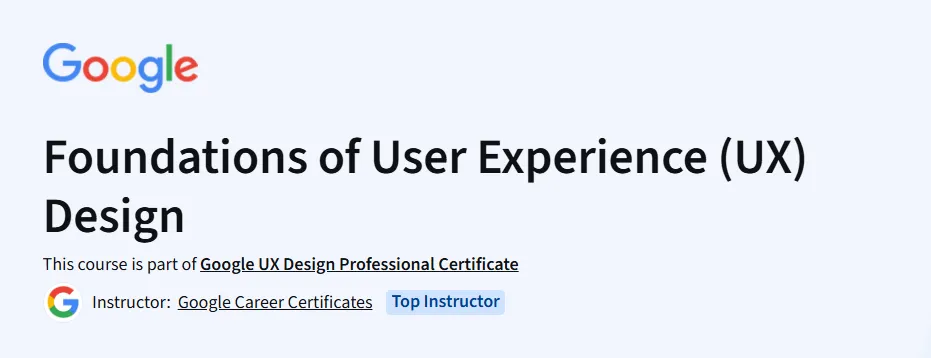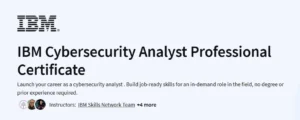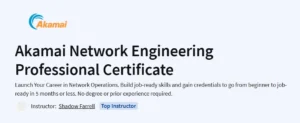What will you learn in Foundations of User Experience (UX) Design Course
Identify entry‑level UX designer roles, career paths, and team dynamics.
Understand user-centered design, accessibility (WCAG), inclusive and equity‑focused design.
Explore and practice design sprints, wireframing, prototyping, and usability testing.
Learn to integrate UX research methods and account for cognitive biases in design.
Program Overview
Module 1: Introducing user experience design
⏳ 4 hours
Topics: UX definitions, job roles, product life cycles, foundations of good UX, team collaboration.
Hands-on: Video quizzes, readings, self‑reflection, module challenge.
Module 2: Thinking like a UX designer
⏳ 1 hour
Topics: Inclusive design, accessibility, assistive tech, cross-platform UX.
Hands-on: Knowledge quizzes, equitable design challenge.
Module 3: Joining design sprints
⏳ 3 hours
Topics: Design sprint phases, sprint briefs, retrospectives, roles.
Hands-on: Assignments & module challenge using real scenarios.
Module 4: Integrating research into the design process
⏳ 3 hours
Topics: UX research methods (interviews, surveys, usability), addressing bias.
Hands-on: Research assignments, bias analysis exercises.
Get certificate
Job Outlook
Equips learners with foundational UX skills—user research, wireframing, and prototyping—for entry‑level UX roles.
Part of Google’s UX Design Professional Certificate, preparing learners over ~200 hours including tool proficiency in Figma and Adobe XD.
Strong industry demand, though learners may need further certification or experience for advanced positions.
Explore More Learning Paths
Enhance your UX design skills with these hand-picked courses designed to help you create user-friendly interfaces, conduct research, and deliver exceptional digital experiences.
Related Courses
UX Design Fundamentals Course – Learn the basics of user experience design, including design principles, user flows, and interface best practices.
Conduct UX Research and Test Early Concepts Course – Gain hands-on experience in user research, usability testing, and early-stage concept validation.
IBM UI/UX Designer Professional Certificate Course – Build a comprehensive skill set in UI/UX design, from wireframing and prototyping to delivering fully polished digital products.
Related Reading
What Is Management? – Explore management principles that help coordinate design projects and deliver successful user-centered solutions.
Specification: Foundations of User Experience (UX) Design Course
|
FAQs
- No prior UX or design experience is required.
- Covers user-centered design, accessibility (WCAG), and inclusive design.
- Hands-on exercises include wireframing, prototyping, and design sprints.
- Focuses on ethical and equity-conscious UX practices.
- Ideal for aspiring UX designers entering the field.
- Conduct UX research with interviews, surveys, and usability tests.
- Design wireframes and interactive prototypes using tools like Figma and Adobe XD.
- Participate in design sprints and module challenges.
- Practice addressing cognitive biases in design decisions.
- Labs reinforce learning through real-world scenario application.
- Prepares for entry-level UX Designer and UX Researcher positions.
- Supports Product Designer and UI/UX Assistant roles.
- Builds skills for user-centered design and accessibility compliance.
- Provides tool proficiency in Figma and Adobe XD.
- Lays groundwork for advanced UX certifications or professional development.
- No dedicated capstone project; learning occurs via module assignments.
- Each module includes practical UX exercises and challenges.
- Encourages learners to compile a project portfolio from lab exercises.
- Provides real-world context for portfolio-ready projects.
- Supports showcasing skills for job applications or internships.
- Total course duration is ~11 hours across four modules.
- Modules range from 1–4 hours each, including lectures and exercises.
- Hands-on labs and challenges may extend total completion time.
- Flexible pacing allows learners to study alongside work or other courses.
- Most learners complete the course in 1–2 weeks with focused effort.





